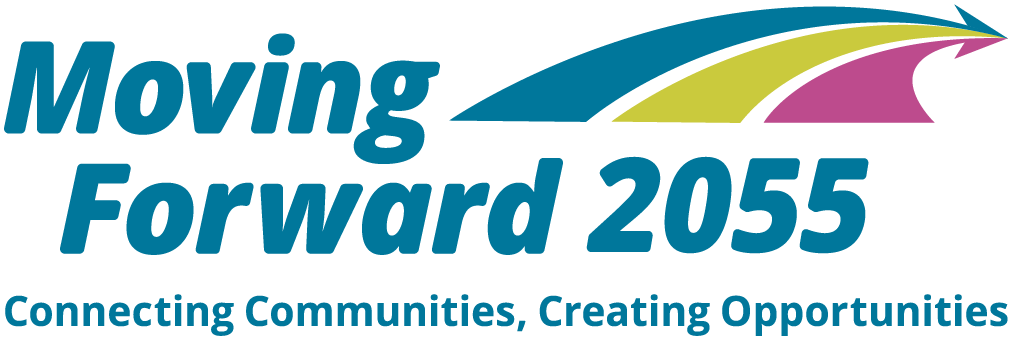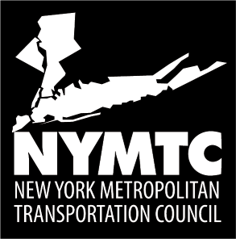
Our Shared Vision for Regional Mobility
Every day, millions of people are on the move in this multi‐state metropolitan region — residents, workers, and visitors depend on safe, accessible, and efficient transportation. The transportation network is not limited to moving people. Every day, millions of tons of goods are on the move, being delivered to residences, area stores, and restaurants. Cargo moves to and from intermodal centers, distribution centers, and warehouses, traveling within and outside of the region. Our transportation network is, and will continue to be, an engine of regional opportunity for communities and commerce, and a connection hub for our country to the rest of the world through seaports and airports. While the individuals who comprise our vast region may move about differently, we all collectively share our need to get around easily and safely.
Our Guiding Principles
The following guiding principles inform our regional transportation planning process and aid in the pursuit of the region’s goals:
- We will value the needs of all users across our region.
- We will seek to use funding for transportation efficiently, no matter its source.
- We will consider all modes of transportation to achieve connected networks that accommodate all modes and all users.
- We will plan for modal shifts, first/last mile connections, and multi-system accessibility and operability.
- We will support multi-agency approaches to better integrate the regional transportation system.
- We will collaborate and coordinate with other government entities to address regional challenges.
- We will engage the public and community stakeholders through workshops, webinars, and other outreach to help guide key decisions in the planning process.
- We will invest in the collection and sharing of quality metrics and data related to transportation.
- We will be open to innovation and technological advancements to enhance our transportation system.
Our Vision
The members of the New York Metropolitan Transportation Council (NYMTC) recognize that mobility — the ability of people and goods to move easily and safely to, from and between locations — is crucial to the lives of everyone who resides in, works in, or visits the NYMTC planning region.
We aspire to ensure that all people, regardless of race, disability status, age, or socioeconomic background, have a right to live, work, and play in communities that are safe, healthy, and free of harmful environmental conditions.
Our Shared Vision is one in which safe, accessible, and efficient mobility for people and goods is made possible by well-maintained and reliable infrastructure. Furthermore, we envision a future where transportation infrastructure and technology enhance community health, minimize pollution, and where strategic investments in transportation support continued economic growth.
As NYMTC, we will pursue our Shared Vision through the metropolitan transportation planning process built from this Plan. To do this, we envision a transportation system where:
Our Objectives in Pursuing These Goals
Objectives
- Ensure that investments in transportation assets enhance the safety and security of passengers and freight systems.
- Prioritize safe streets, intersections, railroad grade crossings and shared-use right of ways, and establish road safety initiatives that follow a Safe System approach.
- Coordinate safety management, training, and safety education for all who share our streets across jurisdictional borders.
- Improve operational safety and security, incorporating the changing nature of transportation and technology so that transportation facilities safely accommodate all travelers.
- Strengthen connected vehicle programs and policies, champion driver assist programs and other technologies that contribute to overall system and individual user safety.
- Improve in-person and automated safety enforcement procedures.
- Prioritize the safety of transportation system operators, workers, and contractors through planning and coordinated management of work zones.
Objectives:
- Maximize environmental/fiscal sustainability and minimize carbon intensity when maintaining, improving, modernizing, and/or replacing transportation infrastructure.
- Reimagine and repurpose the assets that comprise the region’s transportation infrastructure to reconnect communities and improve accessibility across all modes.
- Rebuild, replace, and/or modernize needed transportation assets for passengers and freight.
- Invest in the integration of the region’s multimodal transit network.
- Create efficient and environmentally sound freight networks, systems, and facilities.
- Plan and manage work zones and Maintenance and Protection of Traffic programs to efficiently advance infrastructure upkeep.
Objectives:
- Protect and fortify major transportation assets.
- Invest in extreme weather vulnerability analyses and material solutions for transportation assets.
- Improve regional coordination on emergency and long-term responses to system-wide extreme weather impacts and sea level rise.
- Enhance the transportation network’s resiliency by increasing travel options and redundancies.
- Collaborate on resiliency projects that have significant transportation implications.
- Coordinate across jurisdictions to advance resiliency and sustainability.
- Prioritize resiliency and sustainability in a manner that considers the needs of designated Communities of Concern.
- Invest in future energy infrastructure to minimize the impact of grid events and supply chain disruptions on the transportation system and its users.
- Promote resiliency strategies that account for environmental determinants of health and their impact on vulnerable communities.
Objectives:
- Sustainably manage current and future demands, with an emphasis on expanding active transportation and transit.
- Support mobility for all users by encouraging active transportation, micromobility, complete streets, and other strategies.
- Modernize local freight networks to efficiently plan for growth in the volume of and change in product deliveries.
- Expand the reach of the system to emerging markets, addressing access to and incentivizing employment, social, and recreational opportunities.
- Incorporate emerging and innovative technologies, transportation services and tools into efficient network design, operations, and monitoring.
- Coordinate with governing bodies for clearer accountability, funding, and planning arrangements.
Objectives:
- Encourage transit-oriented development as well as parking, curb and property management, micromobility pathways, and other long-term sustainable land use strategies that support passenger and goods movement while reducing pollution.
- Encourage strategic distribution of growth throughout the region by prioritizing density over less dense development near transit, and by prioritizing transit investments where development is occurring.
- Help create/sustain vibrant communities through placemaking.
- Leverage land use mechanisms to improve access to destinations.
- Manage the First-Mile, Last-Mile planning process through collaboration with transportation and land use planning officials and affected stakeholders.
- Consider the impacts that transportation policies and projects will have on land values and proactively mitigate negative effects on existing communities.
Objectives:
- Improve first- and last-mile access to transit.
- Improve accessibility to the transportation system for users of all abilities.
- Provide more frequent and reliable transit service.
- Strategically expand transportation services and information to enhance mobility in communities with the greatest mobility needs.
- Improve access to social and economic opportunities for all populations, regardless of age, ability, race, ethnicity, or income.
Objectives:
- Support land use sustainability through improved and efficient transportation services and facilities, which enable more efficient land use.
- Practice environmental stewardship in the maintenance and enhancement of the transportation system.
- Promote and improve public transportation and active transportation modes, such as walking and cycling, to reduce pollution, improve air quality, and support public health.
- Support lower- and zero-emission alternatives to current trucking through vehicle technology and greater modal balance.
- Modernize public vehicle fleets to lower- and zero-emission vehicles and support the conversion of private vehicles.
- Efficiently manage limited roadway capacity to mitigate congestion and vehicular pollutants.
- Address the unequal impacts of transportation sector pollution on certain communities.

